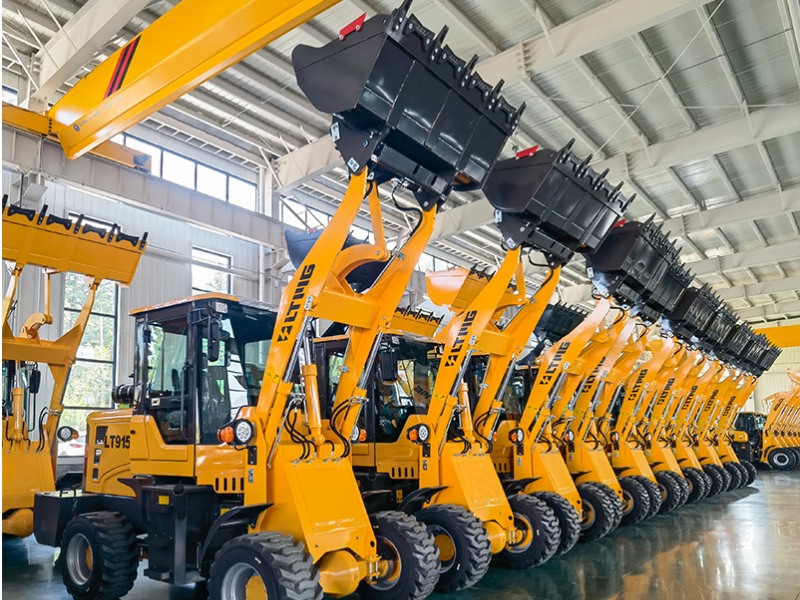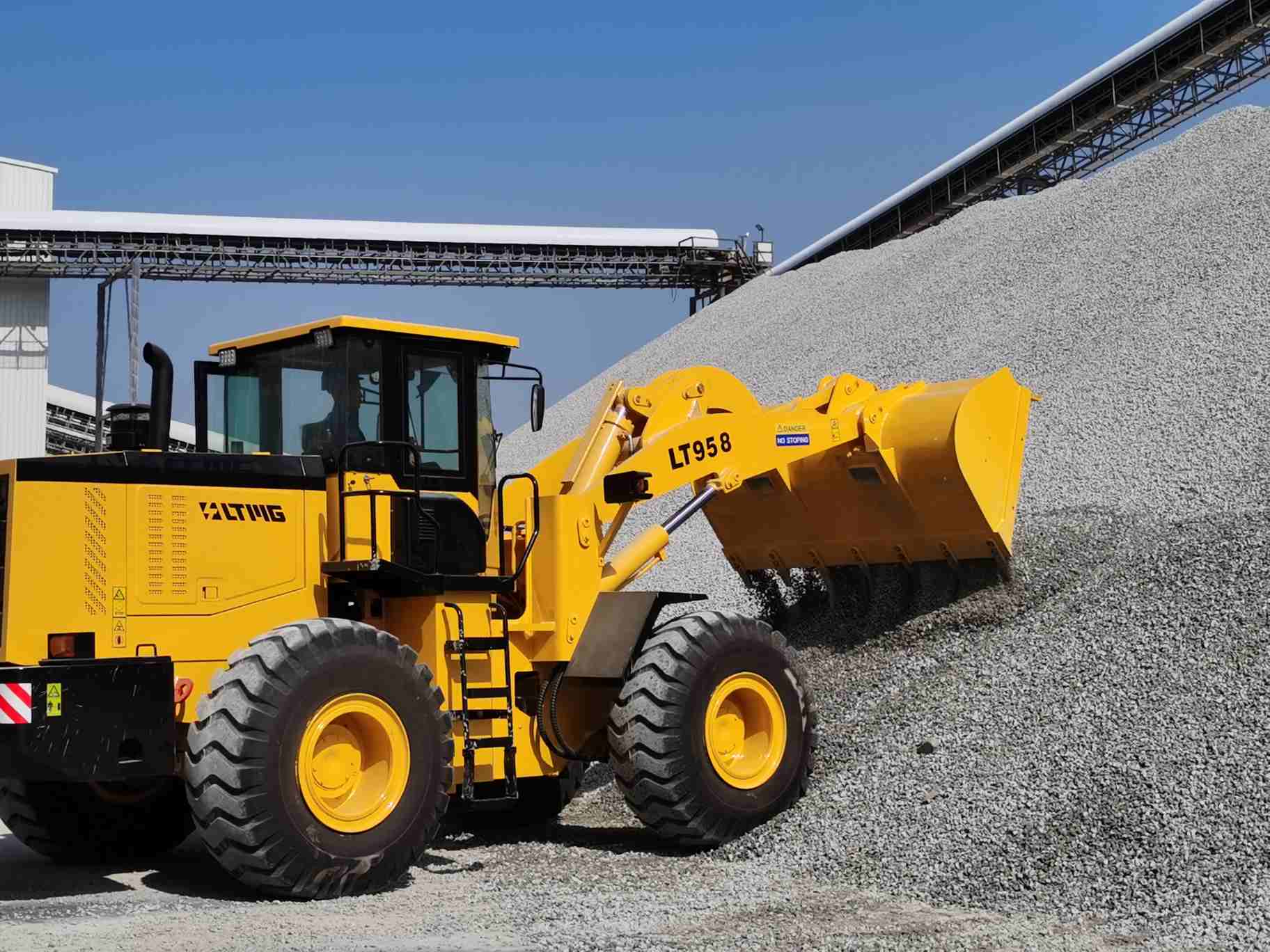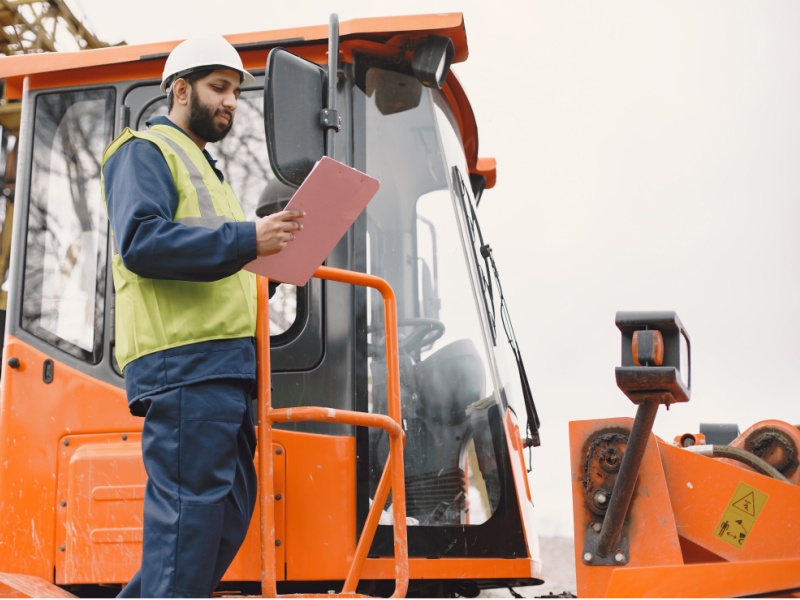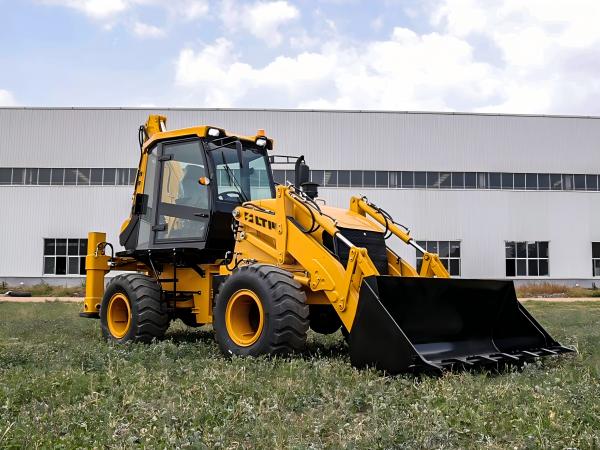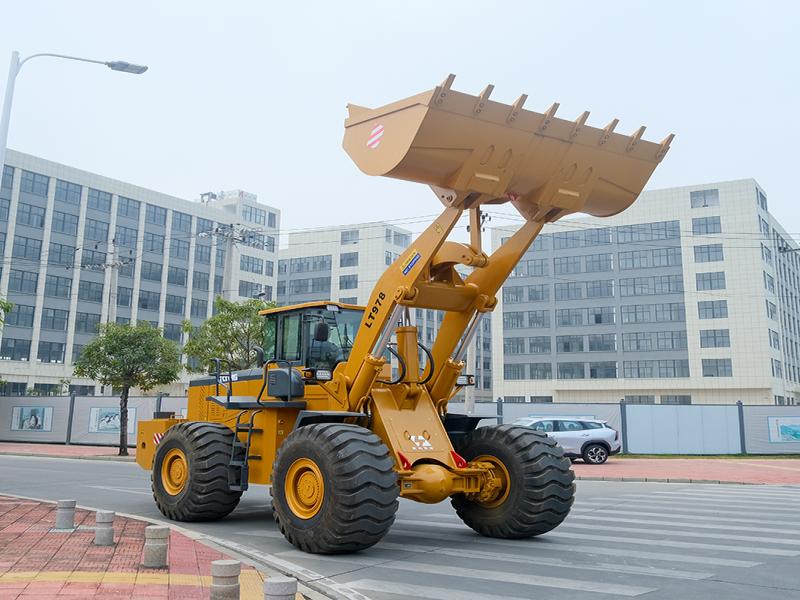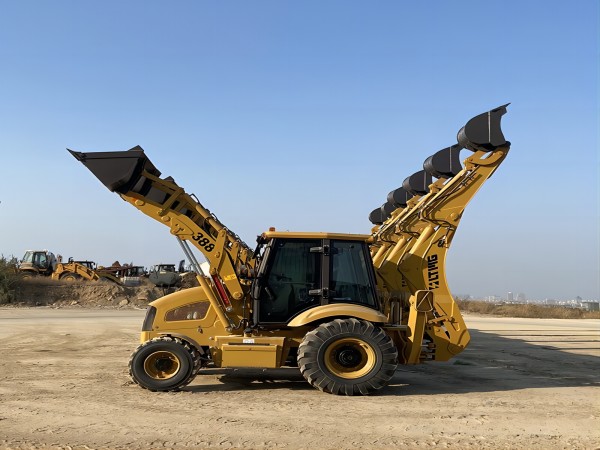Keep Your Equipment Running Efficiently: 5 common loader problems and how to solve them quickly
Jul 22, 2025
Wheel loaders are essential core equipment on construction sites, mines, farms, and ports. They carry out heavy loading, moving, and cleaning work day after day. However, like any hard-working machine, loaders will inevitably encounter various problems.
Identifying and solving these problems on time will not only minimize costly downtime but also ensure safe operation and extend the life of the equipment. This article will take a deep look at the 5 most common loader problems and provide clear, feasible solutions to help you keep your equipment at its best performance.
Problem 1: Sluggish Transmission Response or Slippage (Transmission Problems)
The transmission is the core of the loader's power system, and its health directly affects the equipment's travel and operation capabilities.
Common Symptoms:
Common symptoms include difficult shifting, strong impact, gear slippage or power interruption during driving, abnormal humming or creaking noises from the transmission, and high transmission oil temperature and dashboard alarms.
Root causes:
Root causes include oil problems, such as low transmission oil level, oil contamination or the use of the wrong type of oil; filter blockage, that is, the transmission filter has not been replaced for a long time, resulting in a blocked oil circuit; internal wear, such as wear of internal components such as clutch plates, friction plates or gears; and electronic control failure, that is, failure of the control valve or solenoid valve, resulting in the inability to correctly execute the shift command.
Solution:
Regularly check the oil: Check the transmission oil level daily and replace the transmission oil and filter element strictly according to the manufacturer's recommended cycle. This is the most basic and most important preventive measure.
Use the right oil: Make sure to always use a dedicated transmission oil that meets the equipment specifications.
Pay attention to cleaning: Keep the transmission and radiator clean to ensure good heat dissipation performance.
Professional diagnosis: If the problem persists, especially involving internal noise or severe slippage, stop the operation immediately and contact a professional technician for inspection to avoid the expansion of the fault.
Problem 2: Hydraulic System Failures
The hydraulic system is the "muscle" of the loader, responsible for all key actions such as lifting the boom and flipping the bucket.
Common symptoms:
The speed of lifting the boom or flipping the bucket slows down significantly. Even if the engine speed is high, the lifting force feels insufficient. The hydraulic pump makes a sharp whistling sound. There are obvious signs of oil leakage at the hydraulic oil pipe joints or cylinders, and the hydraulic oil temperature is too high.
Root cause:
Oil contamination is the number one killer of hydraulic system failures. Dust, moisture or metal particles entering the oil will quickly wear out the pump, valve and cylinder; filter element blockage, that is, the hydraulic oil filter element (including oil suction and return oil filter elements) is blocked, resulting in insufficient oil supply; the oil level is too low, that is, the oil level in the hydraulic oil tank is lower than the standard, causing the system to inhale air. Core components are worn, such as wear of the hydraulic pump, main control valve, or internal seals of the cylinder, resulting in internal leakage and the inability to build pressure.
Solution:
Keep the oil clean: Regularly replace the hydraulic oil and all filter elements. When adding or replacing hydraulic oil, ensure the surrounding environment and tools are kept clean.
Daily inspection: Check the hydraulic oil level before starting work every day, inspect all hydraulic pipes and joints, and deal with leaks in time.
Avoid overloading: Long-term overload operation will accelerate the wear of hydraulic pumps and valves.
Professional pressure test: If there is a weakness in movement, ask technicians to use a professional pressure gauge to test the system pressure to accurately locate the fault point.
Problem 3: Difficulty starting the engine or black smoke (Engine Problems)
The engine is the heart of the loader, and any problem with it may cause the equipment to stop completely.
Common symptoms:
Common symptoms include difficulty starting when the engine is cold or hot, requiring multiple attempts, insufficient power when working, feeling "weak", abnormal color smoke coming out of the exhaust pipe (black smoke: incomplete combustion; blue smoke: burning oil; white smoke: fuel contains water or coolant enters the cylinder), and the engine water temperature is too high, or there is an abnormal knocking sound when running.
Root causes:
The root causes include the fuel system, such as clogged diesel filter, poor atomization of the injector or poor fuel quality; in the intake system, the air filter is severely clogged, resulting in insufficient air intake; in the cooling system, the radiator is clogged, the thermostat is faulty or the coolant is insufficient, resulting in engine overheating; there are also problems with the lubrication system, that is, low oil pressure or insufficient oil.
Solutions:
Strictly implement maintenance: According to the maintenance manual, replace the "three filters" (engine filter, diesel filter, air filter) and engine oil on time.
Ensure fuel quality: Add clean and qualified diesel from regular channels.
Keep the radiator clean: Regularly use compressed air to blow away dust and debris on the surface of the radiator.
Pay attention to the dashboard: Always pay attention to key indicators such as the water temperature gauge and oil pressure gauge, and stop the machine immediately for inspection if any abnormality is found. For problems such as black smoke, usually start by checking the air filter and diesel filter.
Problem 4: Excessive wear or damage of tires (Tire/Wheel Problems)
The tire is the only part of the loader that contacts the ground, and its condition directly affects the traction, stability, and even operational safety of the equipment.
Common symptoms:
Uneven wear of the tread pattern, such as excessive wear in the middle, sides or parts, cracks and bulges on the sidewall of the tire, or puncture of the tread by sharp objects, abnormal bumps or body shaking during driving, frequent drop in tire pressure, frequent need for air replenishment, loose wheel hub bolts or deformation and cracks on the rim.
Root causes:
Improper tire pressure. Too high tire pressure will cause aggravated wear in the middle of the tread. Too low tire pressure will cause wear on both sides and increase the risk of a tire blowout. Long-term overloading, that is, continuous operation beyond the rated load, will cause huge pressure on the tire structure. Harsh working conditions, that is, frequent driving on sharp stones, construction waste, or rugged ground. Bad operating habits, such as sharp turns, turning on the spot, and rushing to the pile of materials at high speed, will seriously wear the tires. There is also maintenance negligence, that is, failure to clean the stones embedded in the pattern in time, and the wheel hub bolts are not tightened according to the specified torque.
Solution:
Daily check of tire pressure: When the tire is cool, use a tire pressure gauge to check and adjust to the standard value recommended by the manufacturer before starting work every day. Strengthen visual inspection: Go around the vehicle to check whether there are obvious cuts and bulges on the tire surface, and clean up stones or other foreign objects embedded in the tread in time.
Standard driving operation: Avoid overloading, reduce high-speed driving and sharp turns, and approach smoothly when shoveling materials.
Regular tightening and inspection: Use a torque wrench to check and tighten all wheel hub bolts regularly. Also, check whether the rim is deformed or cracked.
Choose the right tire: Choose tires with corresponding patterns and wear resistance grades according to the main working conditions (such as earthwork, stone yard, coal yard, etc.).
Problem 5: Electrical System Failure (Electrical Issues)
Modern loaders increasingly rely on complex electrical systems to control and monitor equipment status.
Common symptoms:
The headlights and work lights are off or flickering, the starter does not respond or is unable to rotate, the battery is frequently depleted, and the dashboard indicator lights, instruments, or display screens do not work properly.
Root causes:
Battery problems, such as battery aging, pile head corrosion or loose connections; generator failure, that is, the generator cannot charge the battery normally; line damage, such as aging, breakage, short circuit or poor contact of connectors; and fuse blown, that is, a circuit overload or short circuit causes the fuse to burn out.
Solution:
Battery maintenance: Keep the battery terminals clean and tight, and apply butter to prevent corrosion. Check the electrolyte level regularly (if applicable).
Check the generator: Check the tension of the generator belt regularly. If the battery is frequently low, check the charging voltage of the generator.
Protect the wiring: Protect the wiring harness of the entire vehicle to prevent it from being squeezed, rubbed, or exposed to oil and high temperatures.
Check the fuse: If an electrical device does not work, first check the corresponding fuse box.
Conclusion: Prevention is better than a cure
Managing a wheel loader requires establishing a strict daily inspection and regular maintenance plan, so that you can discover and solve most of the above problems in advance.
Timely handling of small problems is the best way to prevent them from turning into expensive overhauls and long downtime. Incorporate preventive maintenance into your daily work, and your loader will return your investment with higher efficiency, longer life, and safer performance.
